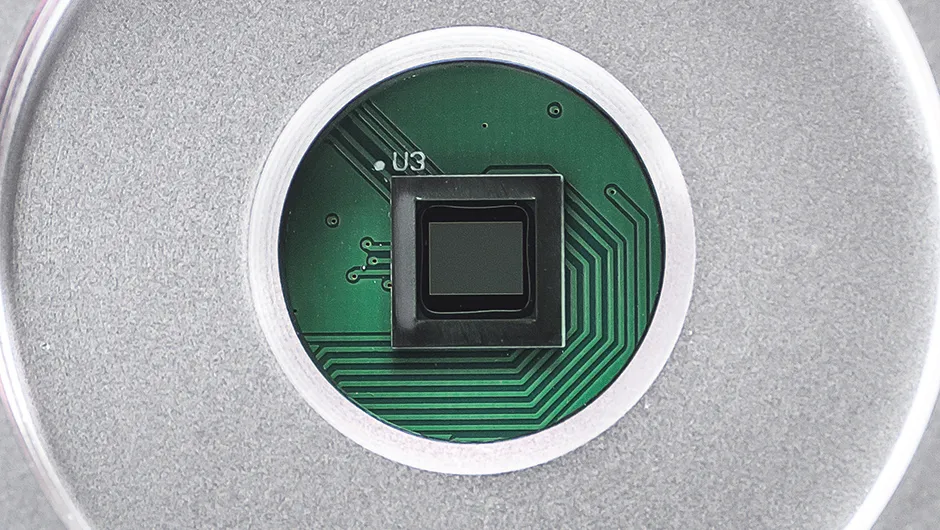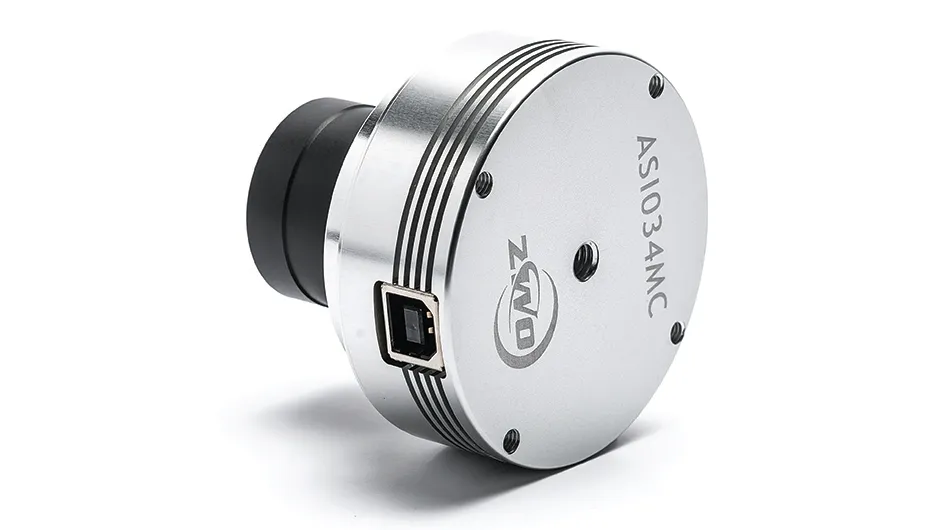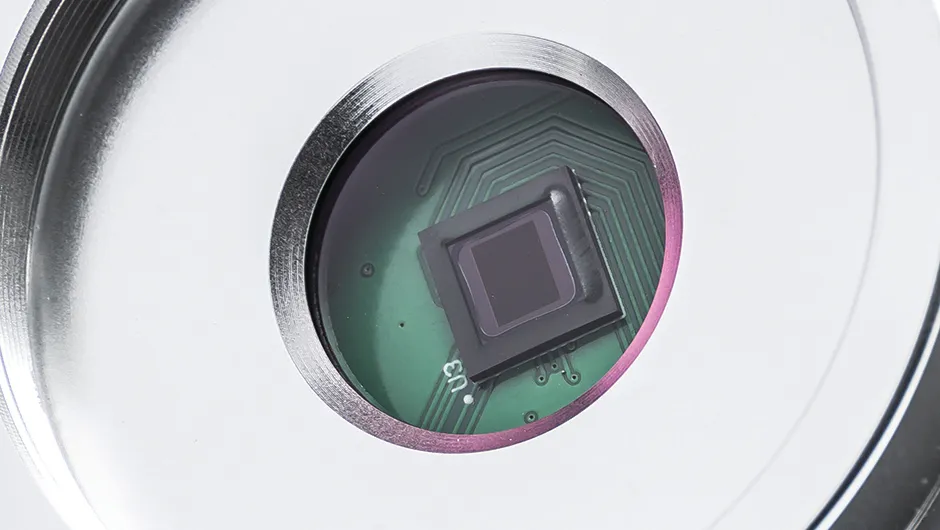Price: £118.00
Weight: 110g
Supplier: 365Astronomy
Telephone: 02033845187
Website: www.365astronomy.com
The ASI034MC is ZWO’s entry-level USB 2.0 digital imaging camera, boasting high sensitivity and high speed in a low-cost colour camera package.
Digital video cameras such as the ASI034MC enable you to capture a stream of short-exposure frames of bright objects.
Using free software such as RegiStax or AutoStakkert! you can then sort through, select and stack the best frames to create an averaged image relatively unaffected by the turbulence in Earth’s atmosphere.
Before connecting the camera to your computer for the first time, you need to install a driver.
This is supplied on a CD that also contains a primitive interface program called AMCap; ZWO itself suggests using the much better freeware programs SharpCap or FireCapture for camera control.
These programs allow you to control the exposure, gain, colour balance, format and many other camera settings.
We tested the camera with FireCapture, a popular feature-rich program specifically designed for a selection of common astronomy-related digital video cameras, including the full range of ZWO devices.
Like the ZWO cameras, FireCapture is a product designed by astronomers for astronomers, and it is being continually improved and enriched.
Online tutorials are available to help you get up to speed with the program if you are unfamiliar with it.
In all of our tests, the camera gave no issues when driven with the latest version FireCapture running on an old Windows XP laptop.

Framing the night
We connected the camera to a 8.75-inch Newtonian scope and – using a Barlow lens to boost the image scale – we captured the planets Venus and Jupiter in bright twilight.
We were impressed by the camera’s high speed when not limited by the exposure time.
The interface is USB 2.0 rather than USB 3.0, but despite this we achieved frame rates of 75fps (frames per second) at full frame.
With a reduced frame size, known as ‘region of interest’ setting, the frame rate can be pushed higher, rising to 260fps for a frame size of 320x240 pixels.
A quarter Moon hanging high in the southern sky was our next target.

The ASI034MC has a chip size of 728x512 pixels and it is generally recommended to have a larger chip than this with more pixels when imaging the Moon or Sun; even so the camera performed well and we got some nice smooth lunar images that showed plenty of detail at the terminator.
We used the camera’s gamma adjustment to good effect here, enabling us to cope with the large brightness range for different features at the terminator.
Saturn was our final object to image but this was low in the south even at its highest altitude; it is always a tough planet to successfully image due to its low surface brightness.
Low surface brightness requires longer exposures and this often leads to significant blurring by the atmosphere, especially at low altitude.
Although a relatively sensitive camera, we had to push the gain up a bit higher than for other targets to keep the exposure times reasonable.
At these higher gains we started to notice increased levels of noise in this camera compared to ZWO’s more advanced models.
As a result, longer runs were needed to gather more frames allowing us bring the noise down to acceptable levels and generate a good image.
The ASI034MC is a tremendous value colour planetary imaging camera with astonishing performance for the price.
If you want a low-cost camera to get you started with Solar System imaging then it comes highly recommended.

CMOS over CCD
Unlike many competing planetary cameras, ZWO’s ASI034MC uses an Aptina CMOS chip rather than a more common CCD chip.
CMOS chips used to be the noisier and less-sensitive cousins of CCDs, but recent improvements in technology have advanced CMOS chips to the point where their noise and sensitivity levels can be comparable or even better than CCDs.
In addition CMOS chips are faster and cheaper to make than CCDs and usually run at lower power consumption.
Cameras based on the sensitive Sony ICX618 CCD chip were – until recently – the most favoured ones for Solar System imaging. We found the ASI034MC’s noise levels and sensitivity similar to that of ICX618-based colour cameras.
We also found its speed similar or better than USB 2.0 cameras using that chip, especially as the ASI034MC has the ability to reduce the frame size to increase the frame rate further.
For the ASI034MC it is the low price for such a well-performing Solar System camera that is the real stand-out feature.

Metal body with 1.25-inch adaptor
The camera body is an attractive circular design made of machined and anodised aluminium, which keeps the weight down and makes the camera robust.
The heat-finned body is threaded at the front with an M42x0.75mm T-thread.
The supplied 1.25-inch adaptor screws into this, enabling you to connect a telescope.
Pixel arrangement
At 728x512 pixels, the chip is larger than a typical 640x480 planetary camera, and uses pixels that are 5.6μm across.
This is a common pixel size among planetary imaging cameras and means that if you want to upgrade the camera at a later date you can use your same Barlow lens without the image scale changing.
Infrared/ultraviolet filter coverglass
The camera has an infrared/ultraviolet-blocking filter fitted just in front of the chip, which is useful for a colour camera as it helps to improve image detail.
The fact that it is built-in saves you having to buy a separate filter. It also protects the chip from dust and dirt.
Colour chip
A colour chip is ideal for those starting out with planetary imaging as you don’t need to buy separate red, green and blue filters and take separate videos through them.
This keeps the cost down and makes the task of taking images and post-processing much simpler and quicker.
Gamma control
The ability to set the camera gamma, often absent in commercially available digital video cameras, is a welcome feature in the ASI034MC.
This allowed us to drop the contrast when imaging the Moon, enabling us to capture details in darker lunar areas without burning out adjacent brighter areas.
This review originally appeared in the September 2015 issue of BBC Sky at Night Magazine.
